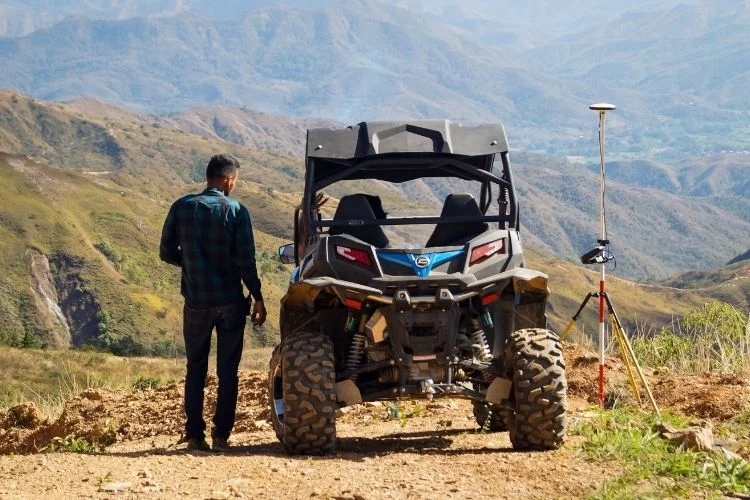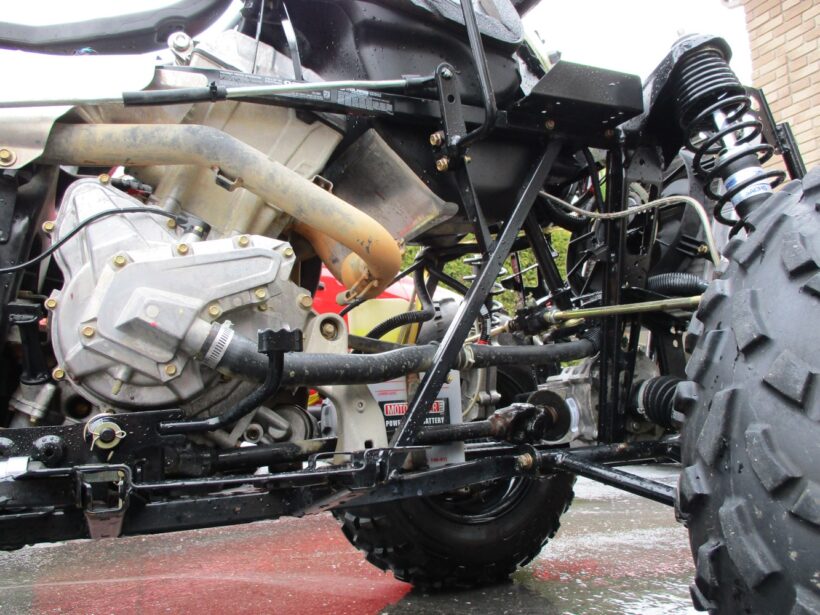All-terrain vehicles are designed to withstand all kinds of wear and tear, but they might not last as long as you think. They vary dramatically in terms of price, durability and longevity, and the average ATV lifespan largely depends on the manufacturer and how well you maintain your vehicle. So, how long will your ATV last? Use this guide to find out before you hit the trails.
What Is the Average Lifespan for an ATV?

It depends on a few factors, but if you’re looking for a simple answer, most ATVs can last up to 10 years or more if they are well-maintained. It’s not uncommon to see vintage off-road vehicles from the ’80s and ’90s driving around on the trail, but today’s machines may not last the test of time.
Browse the owner’s manual and maintenance guidelines to find out how long your specific make/model will function on the trail.
Highly reputable manufacturers like Suzuki, Yamaha and Honda are known for making quads and ATVs that can survive for decades on end. These models typically cost $10,000 or more right off the lot, but you have the opportunity to sell the vehicle down the road to recoup some of your original investment. You will also save money by not having to repair the ATV as much as you would with a less expensive model.
Knockoff models from brands you’ve never heard of tend to give out after six years or more. They also need parts that are harder to find, which can make them harder to repair. These vehicles cost as little as $3,000 to $4,000 but you might not be able to sell them after a few years of rough riding. Consider going with a used model from a brand you trust that’s been well-maintained. They usually cost about the same as low-end models and last just as long — if not longer.
Where and how you ride your ATV will determine how long it lasts. Riding in the mud, rain or over steep rocks and jagged debris can decrease the lifespan of the vehicle if not properly maintained. Racing and heavy hauling will also put added strain on the engine. If you use your vehicle for farming or touring and rarely go faster than 10 mph, it should work well for another 20 years or more.
What Is High Mileage for an ATV?

The high mileage mark varies by make and model, but most ATVs need significant repairs once they reach the 10,000-mile mark. However, this largely depends on maintenance and how you ride. Careless riding or speeding through a waist-deep bog will send it to the repair shop regardless of how many times it’s been driven.
High-quality, well-maintained ATVs can go up to 100,000 miles without breaking a sweat. But cheaper models and used vehicles may run into issues within the first 100 miles.
How Can I Extend the Life of My ATV?

The best thing you can do for your ATV is to drive it with care. Use caution when exploring new areas by scoping out the trail ahead of time. ATVs aren’t bumper cars. Reduce your speed when navigating obstacles to avoid collisions. The same goes for slippery surfaces like muddy bogs and rivers. If you try to turn too fast while speeding, you can easily flip your ATV, which can cause serious injury and damage crucial components of the engine.
Wear the proper ATV riding gear whenever you ride, including a full-face helmet or half-face helmet with goggles, gloves, durable boots, long sleeves and pants to cover your skin.
Give yourself more time to brake when you’re slinging mud and stick to wide open spaces with few obstacles. If you see something, say something. Coordinate with your group to help each other avoid potential hazards without increasing your risk of injury.
You can use ATV hand signals to quickly convey your intentions, but this means taking your hands off the handlebars. Talk to your companions hands-free with off-road communication to stay focused on the task at hand while driving. It will automatically connect when you’re in range. Just speak into the receiver to start up a conversation without missing a beat.
ATVs are designed to get dirty but excess mud, dirt and water can damage the engine over time. Clean off the vehicle after each ride to prevent rust and spray down the metal components with WD-40. Inspect the nuts and bolts for damage and replace them as needed.
The electrical components may short-circuit when exposed to water. You can coat them in grease and silicone to insulate them from everyday debris.
Water and dirt can also clog the air filter, which will slowly reduce engine power. Replace the filter at the recommended intervals and insulate vulnerable parts from flying debris.
Follow the manufacturer’s guidelines when cleaning and repairing the vehicle. You should only use approved parts to avoid voiding the warranty. Keep your fluids at the proper level, including the coolant, oil and fuel, to avoid getting stranded.
Take Care of Your Investment and Enjoy The Ride

An ATV is a big investment and owning one comes with a lot of responsibility. Keep these factors in mind when buying or inspecting your off-road vehicle to make sure it’s still fit to ride.

